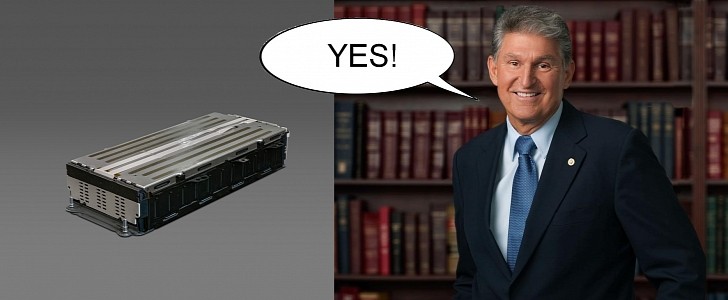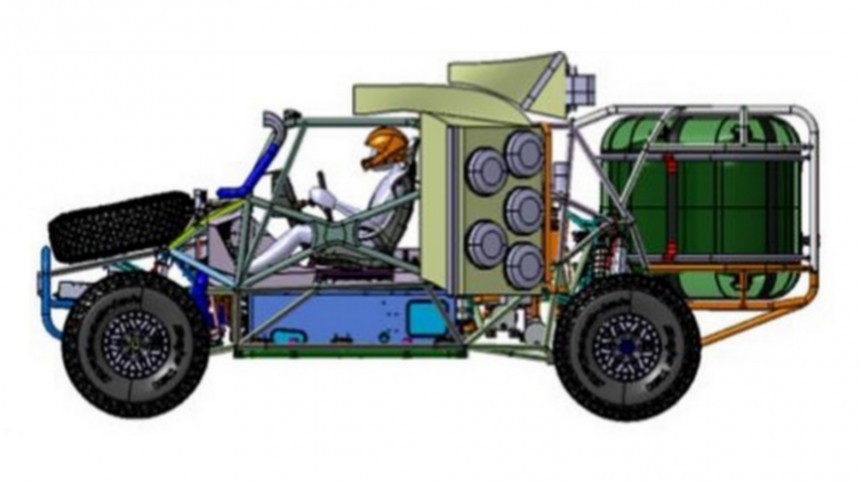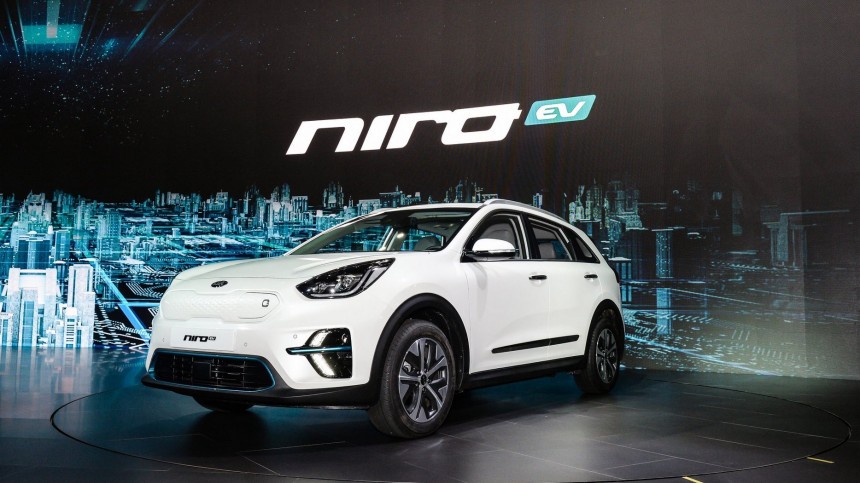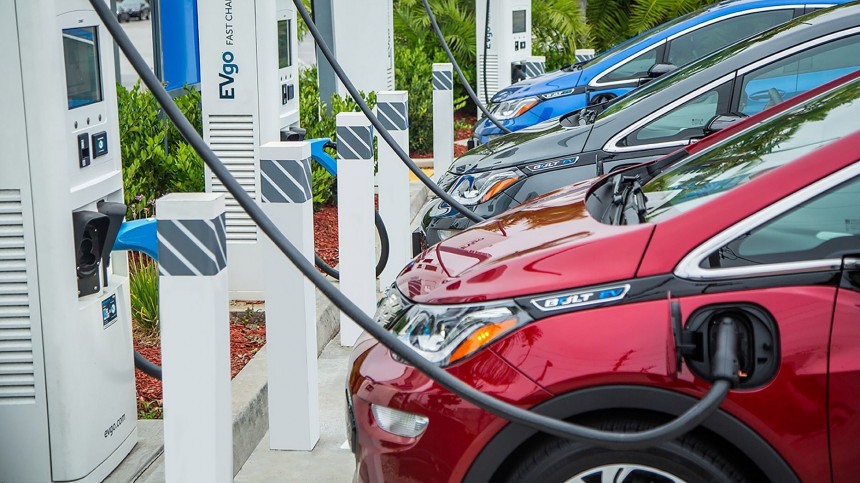The Build Back Better Act is no more. It is still called H.R. 5376 on its Congress page, but senator Joe Manchin renamed it the Inflation Reduction Act of 2022. That’s because it also aims to start paying the U.S.’s massive national debt with a series of measures. It will also stimulate “clean vehicles,” which means new electric cars will keep the $7,500 tax credit with no sales caps, as it currently does. In fact, even used vehicles will get a tax incentive if the bill is approved as it is now.
Getting it approved is something Manchin said he obtained after a deal with Senate Majority Leader Chuck Schumer. If that is confirmed, the Inflation Reduction Act will also have the goal of cutting carbon emissions “while ensuring American energy is affordable, reliable, clean and secure,” as the West Virginia Senator said on his page.
The original federal tax credit for EVs was included in the Internal Revenue Code of 1986. This is the legislation that H.R. 5376 needs to change for the incentives to work in a different way than they do today. It does that in more than 700 pages, filled with instructions about the words that need to be added or suppressed in each section, paragraph, item. Most of the time, it does not show how the final text will look, which makes it really hard to follow.
Part of those changes includes the definitions these vehicles currently follow. Should the bill pass, the Internal Revenue Code will not talk about “qualified plug-in electric drive motor vehicle” anymore. That expression will be replaced by “clean vehicle,” possibly to treat fuel cell electric vehicles (FCEV) just like battery electric vehicles (BEV). Currently, FCEVs have a separate tax credit of $8,000 if they weigh less than 8,500 pounds. The higher the weight, the higher the incentive.
Although H.R. 5376 kills the limit of 200,000 cars per manufacturer, it restricts the products and the people that can benefit from the credits. First of all, just new electric vehicles below $55,000 and new electric pickup trucks, SUVs, and vans below $80,000 will get the tax credit. Secondly, only heads of household with annual revenue of $225,000 or joint fillers and surviving spouses that do not exceed $300,000 for their income are eligible. All other taxpayers that do not fit in these classifications get a limit of $150,000.
That changes when it comes to used vehicles, but not as much as you would expect. The income levels drop by half: $112,500 for heads of household, $150,000 for joint fillers or surviving spouses, and $75,000 for everybody else. Curiously, used clean vehicles seem to follow the same limits as new ones: $55,000 for passenger cars and $80,000 for pickup trucks, vans, and SUVs.
Apparently, legislators did not feel the need to restrict the value of the used vehicles because the lower incomes may do that on their own. In other words, the people who will benefit from this incentive could eventually buy used EVs costing up to $55,000 or $80,000 – depending on what they choose – but they probably can’t. On top of that, why would they spend that kind of money on a second-hand vehicle if they could also go for a new one with a higher tax credit?
It would only make sense if they wanted something that costs more than $55,000 or $80,000 when new. However, that would work in a market where things run as they are supposed to. Currently, used car prices are higher than ever due to the supply chain shortage. People that need a vehicle and cannot get them from automakers will buy them in the used car market, increasing demand and making these EVs more expensive.
A distortion the Inflation Reduction Act may cause relates to benefiting SUVs with a higher limit than that for sedans, station wagons, or other body options. That will stimulate even more a market segment that already sells pretty well, delivering heavier and less efficient vehicles. Automakers may focus even more on them than they already do.
Plug-in hybrid vehicles (PHEVs) will only benefit from the tax credit if they offer a battery pack larger than 7 kWh (the current standard is larger or equal to 4 kWh). Regarding BEVs, they will have to respect some criteria about “critical minerals” and “battery components” for people to be able to buy them with federal incentives.
For them to be eligible for the first half of incentives ($3,750), they will have to have 40% of raw materials “extracted or processed” in countries with which the U.S. has a free trade agreement deal or recycled in North America – meaning Canada and Mexico are included – before January 1, 2024. In 2024, they will have to have 50% of raw materials respect those demands. That increases to 60% in 2025, 70% in 2026, and 80% from 2027 onward.
The battery components follow a similar but more demanding strategy. Eligible cars need at least 50% of “the percentage of the value” of the battery pack coming from components “manufactured or assembled in North America” until January 1, 2024. As you may imagine, that goes to 60% in 2024, 70% in 2025, 80% in 2026, 90% in 2027, and 100% in 2028. This is where the other $3,750 of the $7,500 federal tax incentive come from.
These rules have the potential to become an issue with the World Trade Organization (WTO). Some countries may accuse the bill of being protectionist, and WTO may rule that they are right. Despite that, Canada and Mexico are included, and most carmakers willing to sell in the U.S. have factories there. That may free American authorities from problems of this nature, especially now that the Inflation Reduction Act ditched the union-linked tax incentive the Build Back Better Act wanted to establish.
Specialists are now checking the bill and all the impacts it may have on the automotive industry. If it gets approved, we’ll let you know about all of them.
The original federal tax credit for EVs was included in the Internal Revenue Code of 1986. This is the legislation that H.R. 5376 needs to change for the incentives to work in a different way than they do today. It does that in more than 700 pages, filled with instructions about the words that need to be added or suppressed in each section, paragraph, item. Most of the time, it does not show how the final text will look, which makes it really hard to follow.
Part of those changes includes the definitions these vehicles currently follow. Should the bill pass, the Internal Revenue Code will not talk about “qualified plug-in electric drive motor vehicle” anymore. That expression will be replaced by “clean vehicle,” possibly to treat fuel cell electric vehicles (FCEV) just like battery electric vehicles (BEV). Currently, FCEVs have a separate tax credit of $8,000 if they weigh less than 8,500 pounds. The higher the weight, the higher the incentive.
That changes when it comes to used vehicles, but not as much as you would expect. The income levels drop by half: $112,500 for heads of household, $150,000 for joint fillers or surviving spouses, and $75,000 for everybody else. Curiously, used clean vehicles seem to follow the same limits as new ones: $55,000 for passenger cars and $80,000 for pickup trucks, vans, and SUVs.
Apparently, legislators did not feel the need to restrict the value of the used vehicles because the lower incomes may do that on their own. In other words, the people who will benefit from this incentive could eventually buy used EVs costing up to $55,000 or $80,000 – depending on what they choose – but they probably can’t. On top of that, why would they spend that kind of money on a second-hand vehicle if they could also go for a new one with a higher tax credit?
A distortion the Inflation Reduction Act may cause relates to benefiting SUVs with a higher limit than that for sedans, station wagons, or other body options. That will stimulate even more a market segment that already sells pretty well, delivering heavier and less efficient vehicles. Automakers may focus even more on them than they already do.
Plug-in hybrid vehicles (PHEVs) will only benefit from the tax credit if they offer a battery pack larger than 7 kWh (the current standard is larger or equal to 4 kWh). Regarding BEVs, they will have to respect some criteria about “critical minerals” and “battery components” for people to be able to buy them with federal incentives.
The battery components follow a similar but more demanding strategy. Eligible cars need at least 50% of “the percentage of the value” of the battery pack coming from components “manufactured or assembled in North America” until January 1, 2024. As you may imagine, that goes to 60% in 2024, 70% in 2025, 80% in 2026, 90% in 2027, and 100% in 2028. This is where the other $3,750 of the $7,500 federal tax incentive come from.
Specialists are now checking the bill and all the impacts it may have on the automotive industry. If it gets approved, we’ll let you know about all of them.























